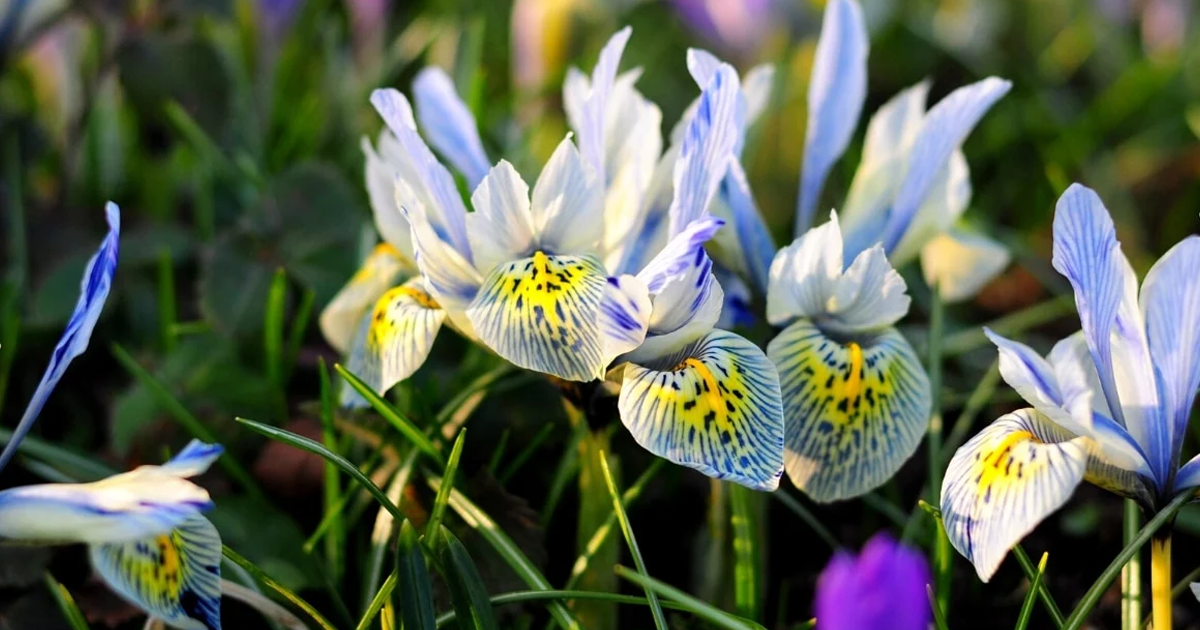
Irises are known for their fabulous blooms, as well as their stunning colors and forms. They exist in gardens on every continent on Earth and are enjoyed for their beauty as seen against the hardiness of the plant and its ability to reproduce in many varieties of climates. Planting iris bulbs at the proper time is required to ensure the planted tubers will grow in healthier conditions and bloom vibrantly. The time will depend on the kind of iris you want. This guide explains when to plant iris bulbs by type so that you may have a thriving garden.
Know Your Iris Varieties
Irises come in several varieties. The most common ones are:
- Beardless Irises (Siberian, Japanese, and Louisiana irises)
- Bulbous Irises (Dutch, Reticulated, and English irises)
Each of these types has different planting needs depending on their growth cycle and climatic needs.
1. Bearded Irises
Bearded irises are appreciated for their elaborate, ruffled flowers and solid, fleshy rhizomes. Bearded irises are hardy perennials and grow wonderfully in well-drained soil in full sun.
When to Plant
- Best: Late summer early fall (Aug – Oct).
- Why: Summer planting allows time for the rhizomes to grow roots before they are dormant. Then, once winter is gone, they develop good growths and blooms by the following spring.
Planting Tips
- Use a sunny, airy location.
- Plant them shallowly, with the rhizome just above the soil surface.
- Plant rhizomes 12-24 inches apart to allow for growth.
Beardless irises, including Siberian, Japanese, and Louisiana irises, are more tolerant of wetter conditions than bearded irises. These types often do well near ponds or in consistently moist gardens.
2. Siberian Irises
- When to Plant: Early spring or late summer to early fall
- Why: Siberian irises can be planted in spring to jumpstart growth, or in late summer so roots have a chance to set in before winter sets in.
- Tips: These irises like a slightly acidic, well-drained soil and full to partial sun.
3. Japanese Irises
- When to Plant: Late summer to early fall
- Why: This allows roots to set in before cold temperatures hit.
- Tips: Japanese irises need acidic soil and a good amount of moisture when in growth.
4. Louisiana Irises
- When to Plant: Late summer to early fall
- Why: Like Japanese irises, Louisiana irises do well planted in the fall so that they can get established before winter.
- Tips: These irises love rich, acidic soil and can tolerate wet conditions, making them a good choice for boggy areas.
5. Bulbous Irises
Bulbous irises, such as Dutch, Reticulated, and English irises, are not rhizomatous. These irises grow from true bulbs and are often grown as annuals in some regions.
6. Dutch Irises
- When to Plant: Fall (September to November)
- Why: Dutch iris bulbs require a period of cold dormancy to bloom. Planting in fall ensures they receive the required chilling period.
- Tips: Plant in well-drained soil and full sun. Plant bulbs 4-6 inches deep and 3-4 inches apart.
7. Reticulated Irises
- Planting Time: Fall (September to November)
- Why: Reticulated irises, like Dutch irises, need a cold period for blooming in late winter or early spring.
- Planting Tips: These small irises bloom in early spring. They are excellent for rock gardens or borders. Plant bulbs 3-4 inches deep and 2-3 inches apart.
8. English Irises
- Planting Time: Fall, September to November
- Why: English irises also require a chilling period, and they bloom in late spring or early summer.
- Tips: Plant bulbs in well-drained soil and full sun, 4-6 inches deep and 3-4 inches apart.
Regional Considerations
The ideal time to plant iris bulbs is dependent on the climate in your region. This is a general guideline:
For climates colder than USDA zones 3 through 5, plant irises in the fall so that rhizome and bulb establishment happen before the first frost. A layer of mulch may provide protection for winter months.
- Mild Climates (USDA Zones 6-8): Fall planting works well, as long as there is no excess moisture in the soil during winter months.
- Warm Climates (USDA Zones 9-11): Plant bearded and beardless irises in the fall, but bulbous irises should often be chilled first to force cold dormancy.
General Planting Tips
In general, here are some guidelines for planting irises of any variety:
Soil Preparation: Make sure that the soil is well-drained. Heavy clay soils may require amendments of sand or compost to improve drainage.
Watering: Irrigate recently planted irises profusely to allow establishment of the roots. Bearded irises don’t like lots of watering too much
Spacing: Space to prevent overcrowding and proper air circulation.
Mulching: Light layer of mulch after planting, retains moisture, and moderates soil temperature. Rhizomes of bearded irises are not covered by the mulch
Fertilizing: Plant and fertilize using low nitrogen content to enable proper root growth
Conclusion
Knowing which time of the year to plant specific iris varieties can truly make all the difference in attaining a very vibrant and healthy garden. When planting bearded, beardless, or bulbous irises, timing is everything, but proper care as well. The specific needs of each variety along with your regional climate will see you through some truly spectacular displays of irises every year. Happy gardening!






